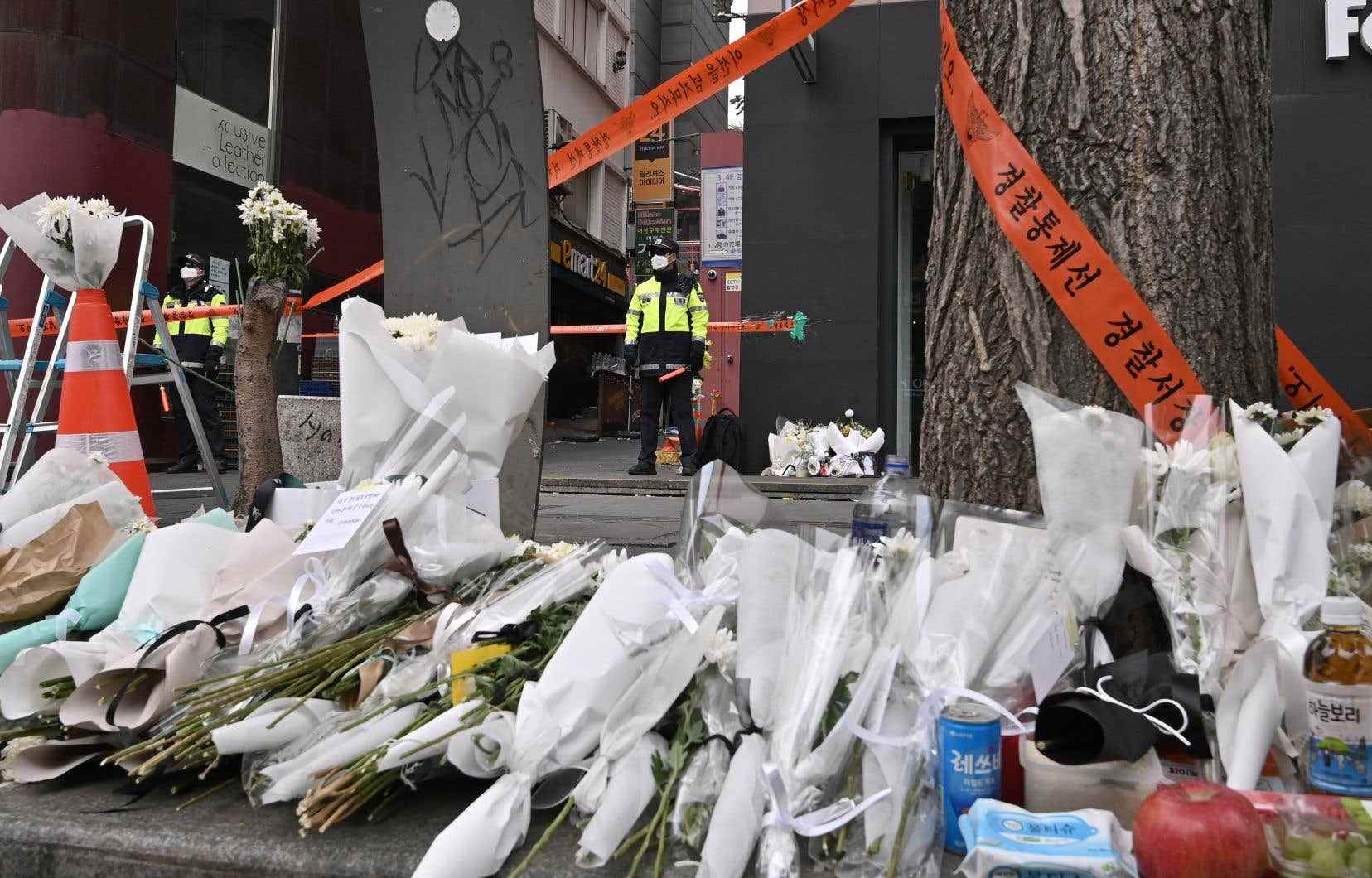The deadly stampede that killed more than 150 people in Seoul last Halloween was due to negligence and lack of preparation, a South Korean police investigation concluded on Friday.
The victims of this tragedy which occurred on October 29, 2022 in the Itaewon district, known for its nightlife, were mainly young costumed revelers, most of them women in their twenties.
The special team in charge of the investigation, which spent months gathering evidence and questioning the authorities concerned, concluded that there had been enormous failures, both at the level of the organization and the reaction on the ground.
“Organizations that are legally bound to prevent and manage disasters – the police, Seoul district offices and the public company Seoul Metro – did not take any security measures in advance or their plans were insufficient” , team leader Sohn Jae-han told reporters.
“No appropriate action was taken even after receiving the emergency calls” on the day of the disaster, he insisted, adding that the lack of cooperation between the competent authorities and the delays in communication had contributed to increase the balance sheet.
For their part, the collectives bringing together the families of victims declared that they were not satisfied with the results of the investigation.
Lee Jong-chul, in charge of one of these collectives, judged that it was impossible for the police to carry out an investigation with impartiality on its own agents. He pleads for the opening of a completely independent investigation.
“I never had confidence in the work carried out by the special team in charge of investigating the Itaewon tragedy,” he told local media.
In addition, Mr Jong-chul told South Korea’s Yonhap news agency that it was disappointing – but to be expected – that senior officials, such as the interior minister and the mayor of Seoul, did not have not been investigated.
A few hours before the tragedy
According to Sohn Jae-han, the Itaewon district became very busy on the day of the tragedy as early as 5 p.m., a few hours before the disaster struck.
The density of individuals reached a critical level around 9 p.m., called “liquid phenomenon”, when people are forced to move together, the crowd moving like a liquid, he added.
Despite the situation, the authorities did not intervene.
The first fall occurred around 10:15 p.m., said investigation team spokesman Kim Dong-wook, adding that four more individuals fell to the ground within the next 15 seconds, triggering the scramble.
“Without having any perspective on the situation, the people at the top of the street continued to push down for ten minutes, until 10:25 p.m., causing hundreds of bodies to be piled up, trapped and crushed over more than ten meters,” Dong-wook said.
Six people have been arrested in connection with the investigation, including Lee Im-jae, the former Yongsan police commissioner who covers the Itaewon district, and Park Hee-young, the Yongsan district chief.
Both are in custody for professional negligence causing the death of others.
In December, a teenager who survived the tragedy was found dead by apparent suicide. Authorities decided to count him as a victim of the disaster, bringing the death toll to 159.
No member of government held accountable
The team of investigators, however, refrained from naming officials in the government or the police, arguing that it was “difficult to conclude that there was a breach of duty”.
The Home Secretary has been heavily criticized in the wake of the tragedy, with some calling for his resignation after he claimed mobilizing more firefighters and police would not have prevented the tragedy.
He has since apologized on numerous occasions, including to the families of the victims last week, but has not tendered his resignation.
South Korea’s rapid transformation from a poor, war-torn nation to Asia’s fourth-largest economy with global cultural reach remains a national pride.
But a series of avoidable disasters – such as the Itaewon tragedy and the sinking of the Sewol ferry in 2014 in which 304 people perished – have shaken people’s trust in their authorities.
